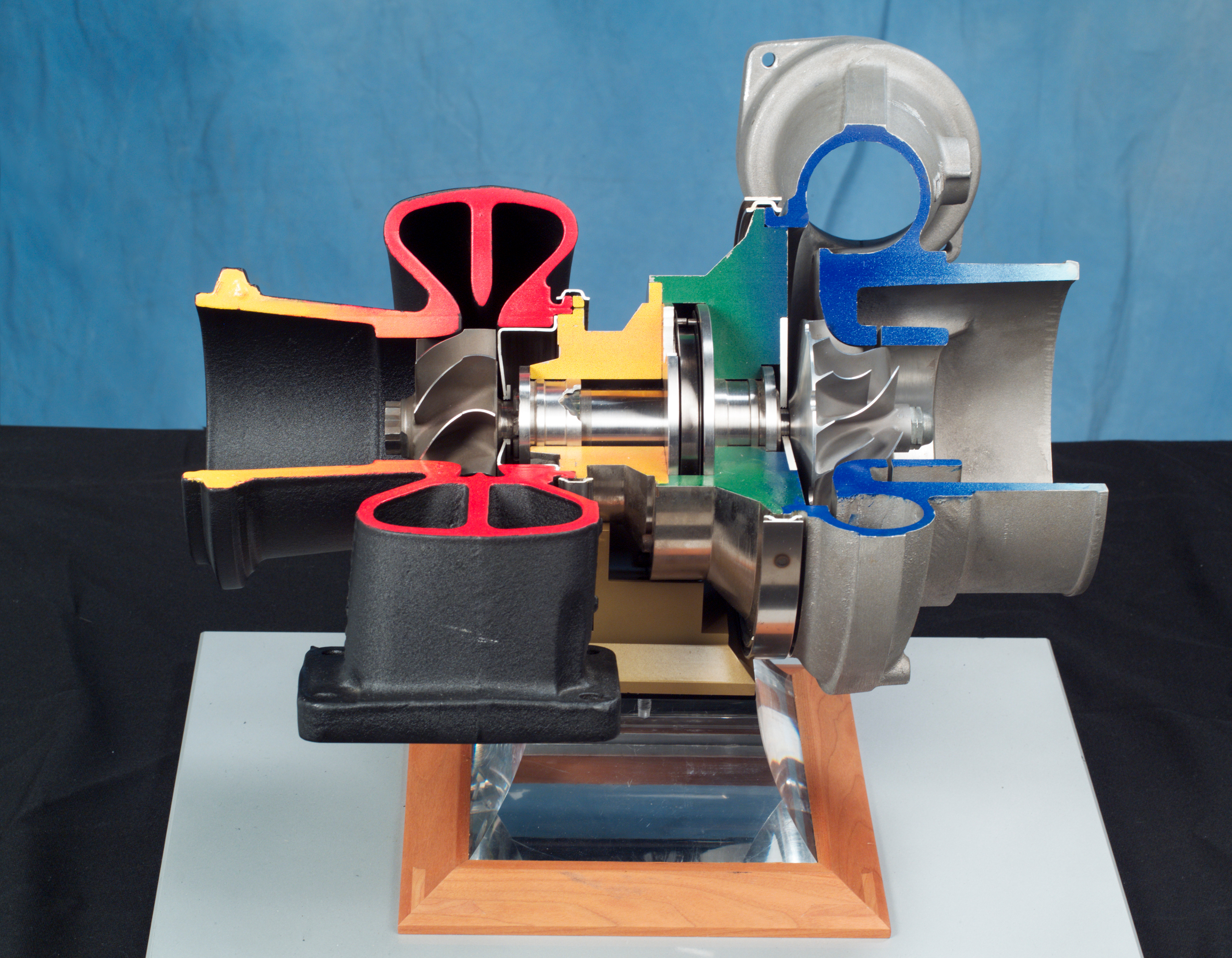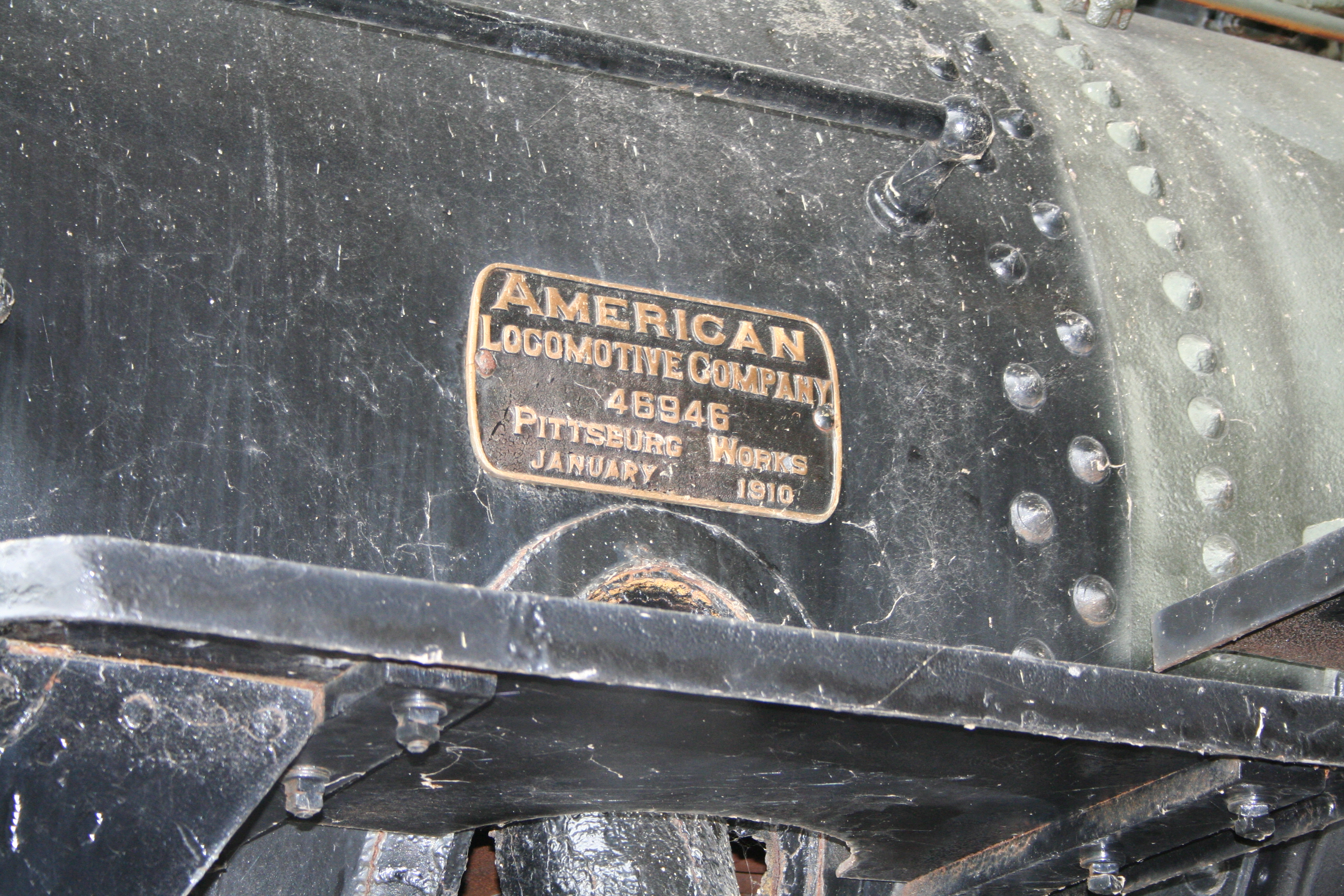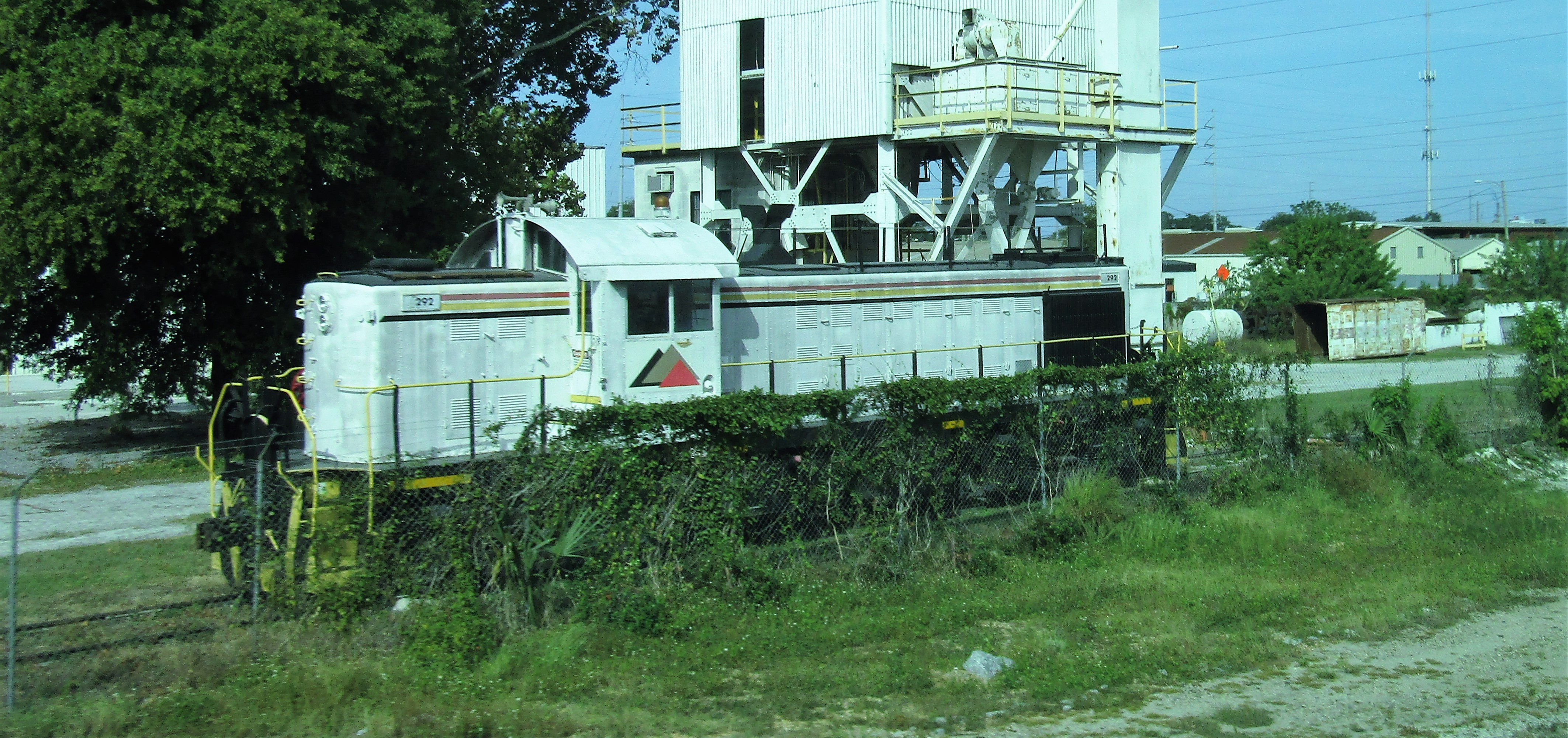|
ALCO 539T
The Alco 539T was a diesel prime mover (locomotive engine) built by the American Locomotive Company. This engine was also used as a stationary powerplant, used in pipeline pumping stations, tugboats and dredges. It has a straight-six, four-stroke design in a cast block which produced from . The engine has a bore (cylinder diameter) of , and a stroke of . The 539 engine was built at Alco's Auburn, New York engine plant and later starting in September 1949 in Canada. The 539T was equipped with the Buchi turbocharger, being made under license by the Elliott Manufacturing Company of Jeannette, Pennsylvania. The first 539T engines were used in S-2 switchers and DL-105 passenger locomotives built in September 1940. Alco locomotives using this engine include the S-2, S-4, RS-1, RSC-1, RSD-1, DL-105, DL-107, DL-108, DL-109, and DL-110. MLW locomotives using this engine include the S-2, S-4, S-7, S-12, RS-1, and RSC-13. An eight-cylinder inline version of the 539T was developed ... [...More Info...] [...Related Items...] OR: [Wikipedia] [Google] [Baidu] |
Alco 539T Locomotive Prime Movers
The American Locomotive Company (often shortened to ALCO, ALCo or Alco) was an American manufacturer of locomotives, diesel generators, steel, and tanks that operated from 1901 to 1969. The company was formed by the merger of seven smaller locomotive manufacturers and Schenectady Locomotive Engine Manufactory of Schenectady, New York. A subsidiary, American Locomotive Automobile Company, designed and manufactured automobiles under the Alco brand from 1905 to 1913. ALCO also produced nuclear reactors from 1954 to 1962. The company changed its name to Alco Products, Incorporated in 1955. In 1964, the Worthington Corporation acquired the company. The company went out of business in 1969. The ALCO name is currently being used by Fairbanks Morse Engine for their FM, ALCO line. Foundation and early history The company was created in 1901 from the merger of seven smaller locomotive manufacturers with Schenectady Locomotive Engine Manufactory of Schenectady, New York: *Brooks Locom ... [...More Info...] [...Related Items...] OR: [Wikipedia] [Google] [Baidu] |
Turbocharger
In an internal combustion engine, a turbocharger (often called a turbo) is a forced induction device that is powered by the flow of exhaust gases. It uses this energy to compress the intake gas, forcing more air into the engine in order to produce more power for a given displacement. The current categorisation is that a turbocharger is powered by the kinetic energy of the exhaust gasses, whereas a is mechanically powered (usually by a belt from the engine's crankshaft). However, up until the mid-20th century, a turbocharger was called a "turbosupercharger" and was considered a type of supercharger. History Prior to the invention of the turbocharger,[...More Info...] [...Related Items...] OR: [Wikipedia] [Google] [Baidu] |
ALCO HH Series
The ALCO HH series were an early series of switcher diesel-electric locomotives built by the American Locomotive Company (ALCO) of Schenectady, New York between 1931 and 1940, when they were replaced by the S series; the S-1 and S-2. They were ALCO's first diesel switchers to enter true series production, and among the first land vehicles anywhere to use the revolutionary diesel-electric power transmission. The "HH" name stood for "High Hood", a name ALCO came eventually to use in an official context, but originally an unofficial name. Model designations such as HH600 are only semi-official. Original ALCO designations were either descriptive or based on the internal order/design number. A total of 177 of the HH series were produced; this comprised one prototype and four production models of varying power outputs. ALCO 600 (New Haven #0900) The first HH series locomotive, ALCO demonstrator #600 was mechanically almost identical to the others, but the appearance differed. ... [...More Info...] [...Related Items...] OR: [Wikipedia] [Google] [Baidu] |
ALCO DL-203
The ALCO DL-202-2 and DL-203-2 diesel-electric locomotive (known informally as the Black Maria) was an experimental freight locomotive produced by ALCO of Schenectady, New York. The primary diesel builders Alco, Baldwin and EMD pushed the War Production Board (WPB) for more opportunities to build more diesels. The Transportation Equipment Division of the WPB announced a production schedule on December 10, 1943, that allowed Alco to build one 4500 horsepower experimental diesel locomotive. This experimental diesel locomotive was to be built in the fourth quarter of 1944. The two A units were built in January 1945 and the B unit at a later date in 1945. The two A units were put on test at Building No. 37 at Schenectady to work out problems with the connecting rods and turbocharger in the Alco 241 engine, developed by both McIntosh and Seymour and ALCo. The total production run included 2 cab DL202-2 A units, and a single DL203-2 B (cabless booster) unit. The locomotives were powere ... [...More Info...] [...Related Items...] OR: [Wikipedia] [Google] [Baidu] |
MLW RSC-13
The MLW RSC-13 was a type of diesel-electric locomotive built by Montreal Locomotive Works for use on Canadian National Railway (CN). Only thirty five RSC-13's were built — between 1955 and 1957 — and were numbered 1700–1734 by CN. The locomotives were conceived by MLW to meet CN's specification for light weight branch lines. The model 539T diesel engine used in the RSC-13 program saw their horsepower rated at . In order to make the locomotive suitable for weight restricted light rail branch lines, MLW spread the weight over the rail surface using A1A-A1A trucks (2 powered axles, 1 unpowered axle) which were manufactured by Dominion Foundries and Steel (DOFASCO); this same truck was also adopted for the MLW RSC-24. The RSC-13 was a one-of-a-kind diesel locomotive design and CN used these unique units to replace steam locomotives A steam locomotive is a locomotive that provides the force to move itself and other vehicles by means of the expansion of steam. It i ... [...More Info...] [...Related Items...] OR: [Wikipedia] [Google] [Baidu] |
MLW S-12
MLW, or mlw, may refer to: Sports * Maple Leaf Wrestling * Major League Wrestling * Major League Wiffle (MLW) Transportation * Maximum landing weight, the maximum weight at which an aircraft is permitted to land * MLW, the IATA code for Spriggs Payne Airport near Monrovia in Liberia * MLW, the National Rail code for Marlow railway station in the county of Buckinghamshire, UK * Montreal Locomotive Works, a former Canadian railway locomotive manufacturer Other uses * Malawi Malawi (; or aláwi Tumbuka: ''Malaŵi''), officially the Republic of Malawi, is a landlocked country in Southeastern Africa that was formerly known as Nyasaland. It is bordered by Zambia to the west, Tanzania to the north and northe ..., UNDP country code * Master of Labour Welfare, a postgraduate degree course offered by some Indian Universities * mlw, the ISO 639-3 code for the Moloko language spoken in northern Cameroon See also * * {{Disambiguation ... [...More Info...] [...Related Items...] OR: [Wikipedia] [Google] [Baidu] |
ALCO DL-109
The ALCO DL-109 was one of six models of A1A-A1A Diesel locomotives built to haul passenger trains by the American Locomotive Company (ALCO) between December, 1939 and April, 1945 ("DL" stands for Diesel Locomotive). They were of a cab unit design, and both cab-equipped lead A units DL-103b, DL-105, DL-107, DL-109 and cabless booster B units DL-108, DL-110 models were built. The units were styled by noted industrial designer Otto Kuhler, who incorporated into his characteristic cab (US Patent D121,219) the trademark three-piece windshield design. A total of 74 cab units and four cabless booster units were built. History All models developed . The first unit built as ALCO Specification DL-103b was longer than the other cab units, and became Chicago, Rock Island and Pacific Railroad #624. The DL-103b had the two radiator sections positioned together at the end of the carbody, while all other units had a split radiator arrangement with one placed at the back of the unit and ... [...More Info...] [...Related Items...] OR: [Wikipedia] [Google] [Baidu] |
ALCO RSD-1
The ALCO RSD-1 was a diesel-electric locomotive built by the American Locomotive Company (ALCO). This model was a road switcher type rated at and rode on three-axle trucks, having a C-C wheel arrangement. It was often used in much the same manner as its four-axle counterpart, the ALCO RS-1, though the six-motor design allowed better tractive effort at lower speeds, as well as a lower weight-per-axle. It was developed to meet the need to supply the Soviet Union over the Trans-Iranian Railway starting in mid 1943. On the other hand, due to the traction generator and appurtenant control apparatus being sized for four axles and yet having two additional powered axles, it had poorer performance at higher speeds.Rakov (1995), p. 371-374. Variations There were three different specifications issued that covered the RSD-1 model; E1645 and E1646 were for wartime production for the US Army, while E1647 was a post-war order for the Mexican National Railways (Ferrocarriles Nacionales de ... [...More Info...] [...Related Items...] OR: [Wikipedia] [Google] [Baidu] |
ALCO RSC-1
The American Locomotive Company (often shortened to ALCO, ALCo or Alco) was an American manufacturer of locomotives, diesel generators, steel, and tanks that operated from 1901 to 1969. The company was formed by the merger of seven smaller locomotive manufacturers and Schenectady Locomotive Engine Manufactory of Schenectady, New York. A subsidiary, American Locomotive Automobile Company, designed and manufactured automobiles under the Alco brand from 1905 to 1913. ALCO also produced nuclear reactors from 1954 to 1962. The company changed its name to Alco Products, Incorporated in 1955. In 1964, the Worthington Corporation acquired the company. The company went out of business in 1969. The ALCO name is currently being used by Fairbanks Morse Engine for their FM, ALCO line. Foundation and early history The company was created in 1901 from the merger of seven smaller locomotive manufacturers with Schenectady Locomotive Engine Manufactory of Schenectady, New York: *Brooks Locom ... [...More Info...] [...Related Items...] OR: [Wikipedia] [Google] [Baidu] |
ALCO RS-1
The ALCO RS-1 was a 4-axle diesel-electric locomotive built by Alco-GE between 1941 and 1953 and the American Locomotive Company from 1953 to 1960. ALCO subsidiary Montreal Locomotive Works built an additional three RS-1s in 1954. This model has the distinction of having the longest production run of any diesel locomotive for the North American market. The RS-1 was in production for 19 years from the first unit Rock Island #748 in March 1941 to the last unit National of Mexico #5663 in March 1960. Design In 1940, the Rock Island Railroad approached ALCO about building a locomotive for both road and switching service. To meet the Rock Island's request, ALCO created the RS-1. Their new design was a hood unit, in contrast to most existing locomotive designs at the time which were predominantly carbody units. The hood unit design allowed for improved visibility, especially to the rear. Rear visibility is very important for switching, which often involves reverse movements. Unli ... [...More Info...] [...Related Items...] OR: [Wikipedia] [Google] [Baidu] |
ALCO S-4
The American Locomotive Company (often shortened to ALCO, ALCo or Alco) was an American manufacturer of locomotives, diesel generators, steel, and tanks that operated from 1901 to 1969. The company was formed by the merger of seven smaller locomotive manufacturers and Schenectady Locomotive Engine Manufactory of Schenectady, New York. A subsidiary, American Locomotive Automobile Company, designed and manufactured automobiles under the Alco brand from 1905 to 1913. ALCO also produced nuclear reactors from 1954 to 1962. The company changed its name to Alco Products, Incorporated in 1955. In 1964, the Worthington Corporation acquired the company. The company went out of business in 1969. The ALCO name is currently being used by Fairbanks Morse Engine for their FM, ALCO line. Foundation and early history The company was created in 1901 from the merger of seven smaller locomotive manufacturers with Schenectady Locomotive Engine Manufactory of Schenectady, New York: *Brooks Locom ... [...More Info...] [...Related Items...] OR: [Wikipedia] [Google] [Baidu] |







